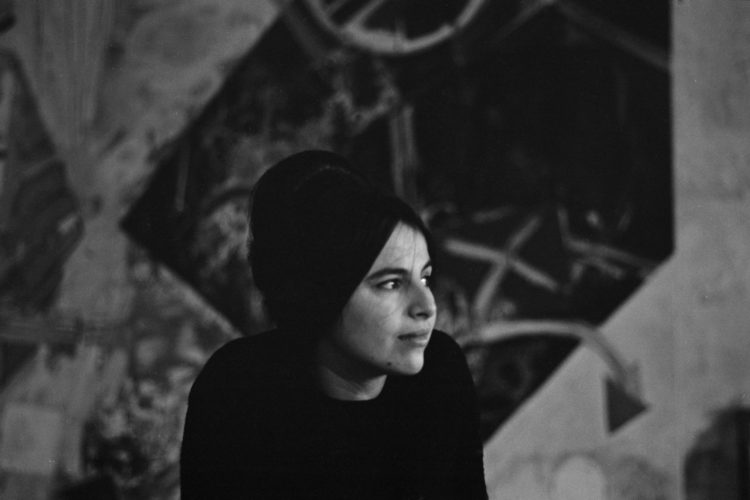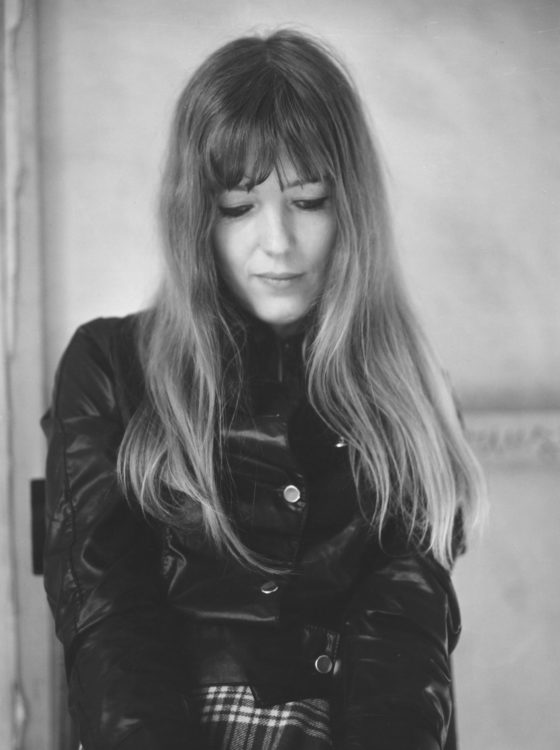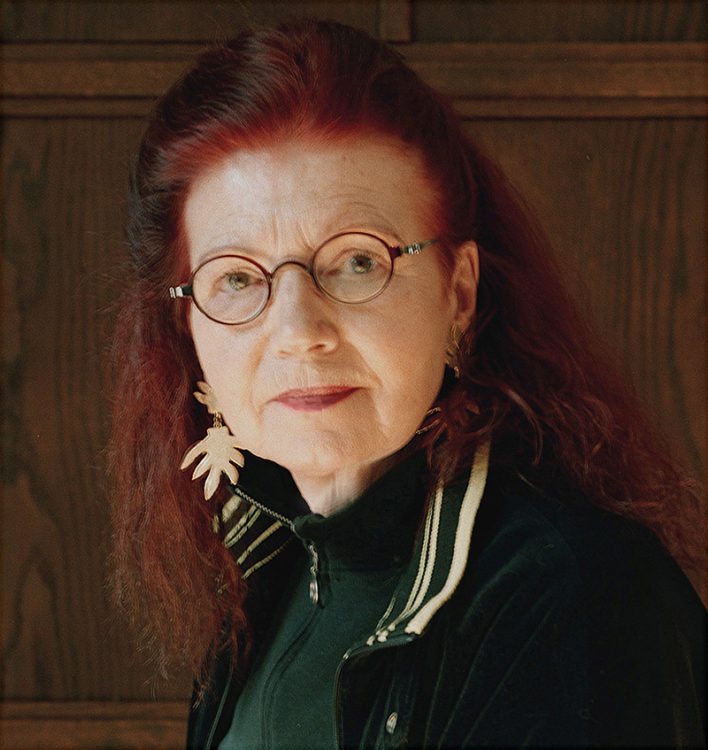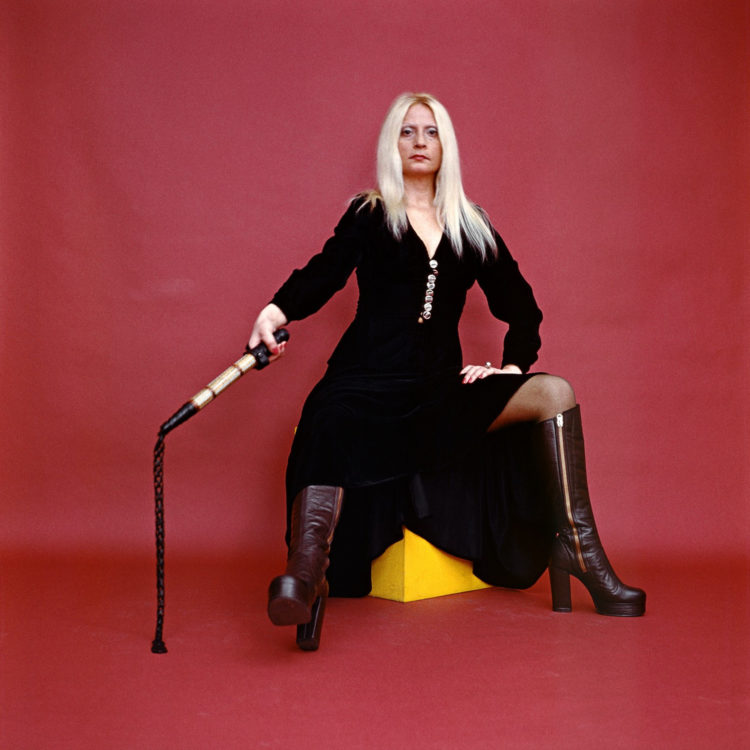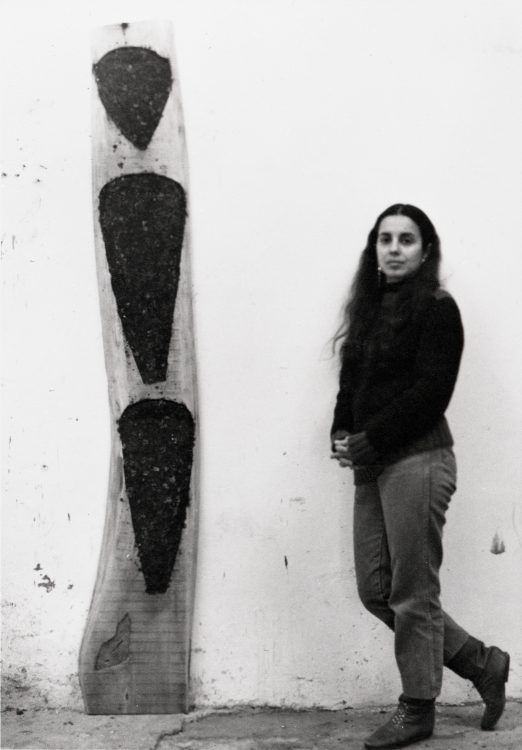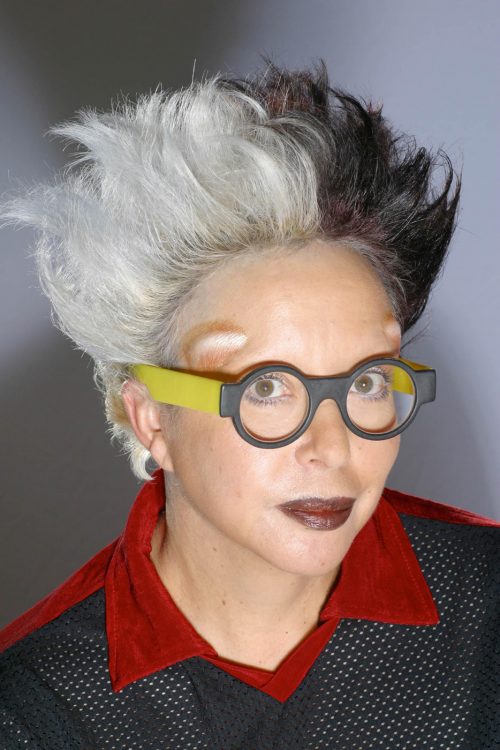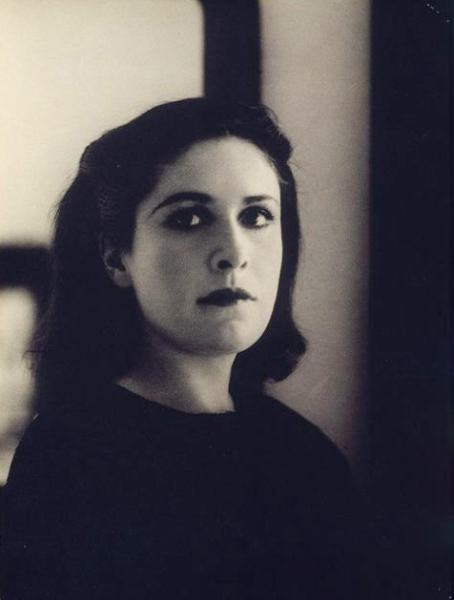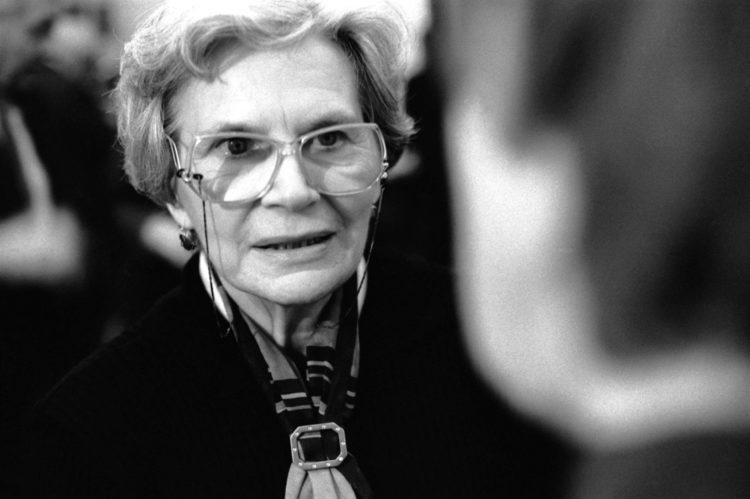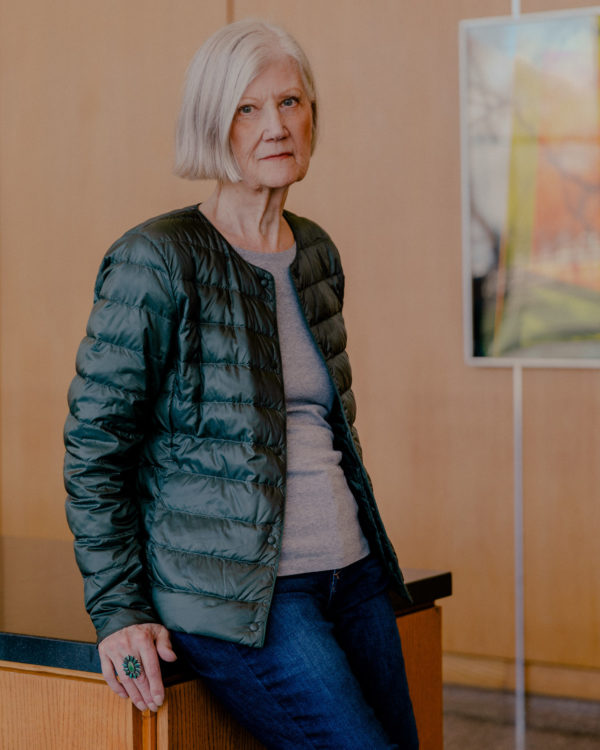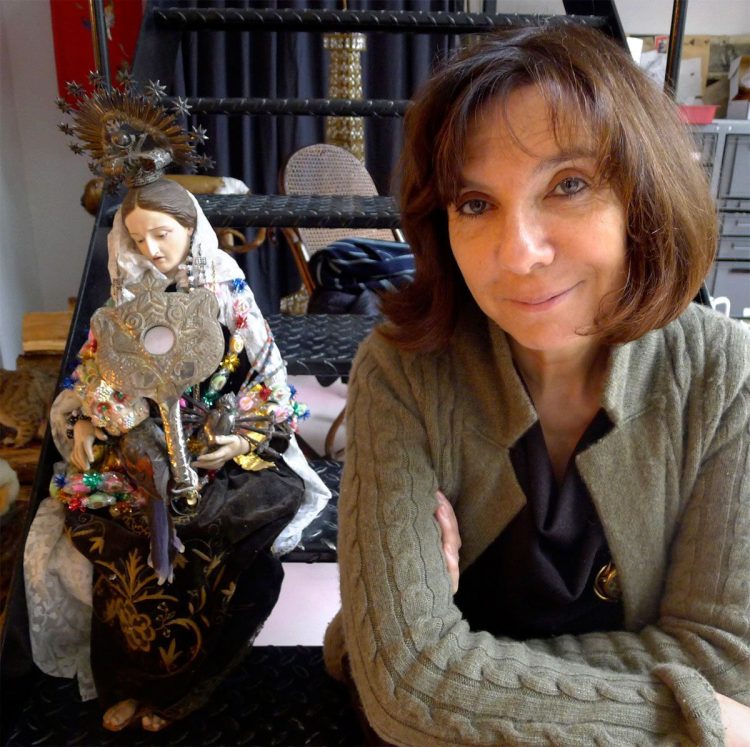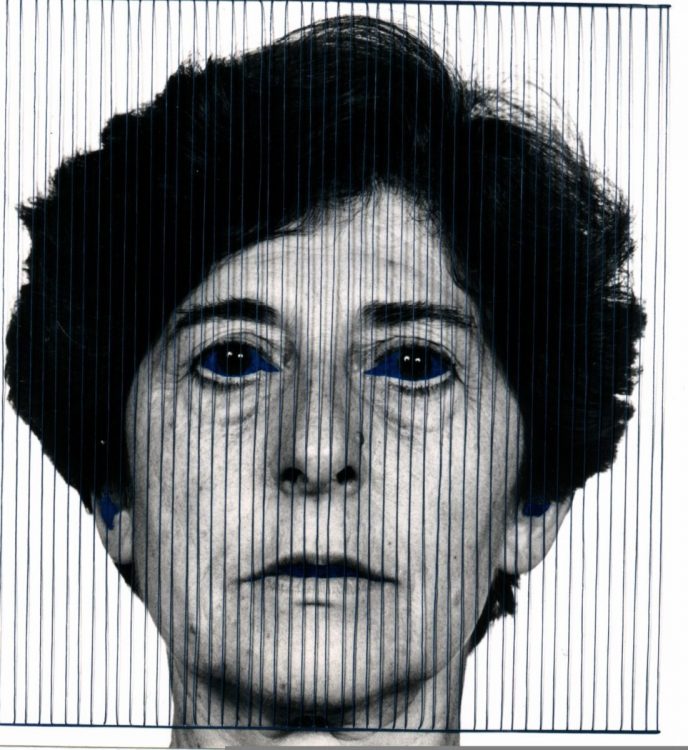Interviews
Martha Rosler, Woman With Vacuum, or Vacuuming Pop Art, from the series Body Beautiful, or Beauty Knows No Pain, c. 1966-1972, photomontage © Nicolas Brasseur
Floriane de Saint Pierre was only 26 years old when she established her recruitment agency, which was to become an essential reference in the world of luxury. Committed to female representation in the workplace, President of the Amis du Centre Pompidou since 2020 and a leading patron of the Musée National d’Art Moderne, she has supported AWARE from the very beginning. Her collection of contemporary art has naturally focused on the representation of women artists. From the avant-gardes of the 1920s to young contemporary talents, Floriane de Saint Pierre keenly observes women who write or who have written the history of art, and who have all too often been forgotten. Her collection is intended to be a constantly evolving platform for research and discovery.
Marion Vignal: At what point did you decide to focus your collection exclusively on the work of women artists? What led you to make this decision?
Floriane de Saint Pierre: The real turning point was when I met Camille Morineau and went with her to the exhibition elles@centrepompidou, which she curated. This show, which was held in 2009, looked at the collections of the Musée National d’Art Moderne through the prism of the work of women artists. When I started out in the late 1980s, I bought artworks that spoke to me, with no constructed approach. Martin Kippenberger, Ben, Niki de Saint Phalle and César were among the first artists whose work I acquired. I didn’t think of myself as a collector, and I didn’t like the idea of accumulating things. My conversations with Camille, her decision to create AWARE in 2014, my subsequent discovery of how underrated women artists have been, and my awareness of this “missing limb” of art history were a source of fascination for me. Gradually putting together a collection was my way of helping to promote greater knowledge and recognition of women artists.
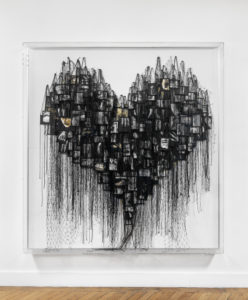
Annette Messager, Le Cœur, from the series Mes Vœux sous filet, 1998-1999, framed gelatin silver prints, net, ropes © Nicolas Brasseur, © adagp
MV: What was your relationship with female artists before this collection came into being?
FSP: Until then, I’d never specifically pondered the question of women artists, even though I’d been struck by some of their work. In 1984 I was bowled over by the exhibition devoted to Annette Messager at the Musée d’Art Moderne in Paris. I promised myself I’d buy something by her one day, and fifteen years later I did. Le Cœur, from the series titled Mes vœux sous filet, is one of my earliest acquisitions and has stayed in my office ever since. Some years later, in 1994, my mother, who was mounting avant-garde public installations based on loans from galleries in a family home in Brittany, devoted one of them to women artists: here I discovered Rebecca Horn, Rosemarie Castoro, Eva Hesse and Gisèle Freund, among others. Aware that they were under-represented in the art world, she too wanted to pay tribute to them. That exhibition certainly helped to awaken my sensitivity to female artists.
MV: There was also the day Camille Morineau came to your home and unexpectedly enlightened you about a family portrait…
FSP: Yes, that was very funny! Camille Morineau came to my place and paused in front of a huge nineteenth-century portrait. This painting, which goes from floor to ceiling, is of a very beautiful woman holding a pommelled cane in her left hand. Her right hand is pointing to a place on a stone – it’s a royal pose, in the style of Hyacinthe Rigaud – but her loose hair under her hat cascades down to her waist. I’d always known it was my great-great-aunt Marthe de Saint Pierre, who had no heirs. Camille drew my attention to the model’s unusual pose and the identity of the artist, Frédérique Vallet-Bisson – a woman. She told me that Vallet-Bisson was vice-chair of the Union of Woman Painters and Sculptors. She fought for the recognition of women artists and in 1893 represented France at the Chicago World Fair, in the Woman’s Building. I found it striking that my ancestor should have chosen such a highly engaged artist to paint a portrait showing her in an attitude of power. As a Breton, I felt that this could hardly be a coincidence! That’s when I decided that this distant relative would be the “godmother” of my commitment to women artists. But before anything else I had a great deal of work and learning to do.
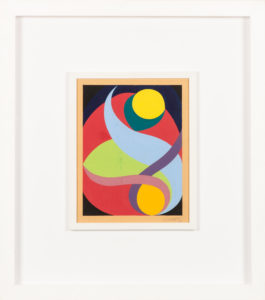
Anna Beöthy Steiner, Absztrakt kompozíció [Abstract composition], 1927, gouache on paper © Nyima Marin
MV: What did you put in place in order to achieve that?
FSP: In the end, there were three sides to this new commitment: learning, support and testimony. Camille Morineau, who had just left the Centre Pompidou to set up AWARE, supported my husband and me in this immersive endeavour, which involved learning the history of women’s art and starting the collection. In parallel, Camille asked me to help her find funding for AWARE, which I did. I was immediately convinced of the need to fund research at the highest academic level to improve knowledge and recognition of women artists. Fairness and justice are values that matter to me. The fact that female artists who are just as talented as male artists should be accorded equal recognition is a matter of justice. The “testimony” strand mostly involves loans to institutions. Cecilia Alemani, curator of this year’s Venice Biennale, The Milk of Dreams, asked me to lend a piece by Marie Vassilieff I acquired at auction a few years ago, a small photo from the 1920s. Marie Vassilieff was a Russian painter and sculptor who ran a canteen for avant-garde artists in her house in the Montparnasse district of Paris (the Villa Vassilieff is now AWARE’s headquarters). She also features in the exhibition Pioneers: Artists in the Paris of the Roaring Twenties currently at the Musée du Luxembourg, for which I was delighted to loan two works by Anna Beöthy-Steiner, a wonderful Hungarian abstract painter of the 1920s whose work remains little known.
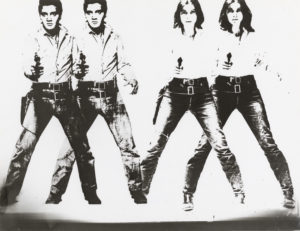
Ulrike Rosenbach, Art is a Criminal Action, no. 4, 1969-1970, gelatin silver print on Baryth paper © Nicolas Brasseur, © adagp
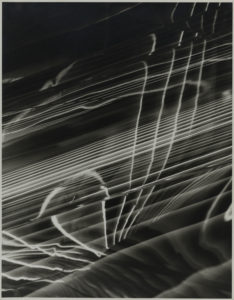
Carlotta M. Corpron, Winds Between the Worlds, ca. 1948, gelatin silver print on matt Agfa paper © Nicolas Brasseur

Ida Lansky, Blueprint, 1950s, vintage gelatin silver print © Nicolas Brasseur
MV: It’s true that the work of women artists is little known but extensive. What period or theme did you decide to focus on in order to build your collection?
FSP: The 1960s to the 1980s, which is the era I grew up in, were an obvious choice from the start. One section is devoted to pop and feminist artist of that period: Eulàlia Grau, Christa Dichgans, Ulrike Rosenbach, Natalia LL, Ewa Partum, Gina Pane, Ana Mendieta, ORLAN and so on. In parallel, Camille Morineau showed me that photography was a medium to which women artists were intrinsically connected. It allowed them to make a living from commissions, especially in advertising, while pursuing their artistic careers. Examples include Dora Maar, Germaine Krull and Grete Stern. This led me to take a special interest in woman photographers from the 1920s to today, with a section devoted to abstract photography: Margaret De Patta’s photogrammes in 1930s California, the Texas Bauhaus movement in Denton in the 1940s and so on. Works by Carlotta Corpron, Ida Lansky and Barbara Maples were included in the marvellous exposition Women in Abstraction at the Centre Pompidou in 2021, curated by Christine Macel and Karolina Lewandowska. There’s also Lou Landauer in Israel, Běla Kolářová in Prague and, more recently, the American photographers Barbara Kasten and Ellen Carey. The role and status of women in avant-garde movements fascinates me. A century later, the period is still an incredible source of inspiration, for these women artists explored the full gamut of creative domains, including dance, music, film, design, textile and performance. Their approach was naturally cross-disciplinary. But of course contemporary art also interests me enormously, with photography as a common thread. And over the last few years, African artists and artists of the African diaspora: Zanele Muholi of course, but also Mimi Cherono Ng’ok, Lebohang Kganye, Alice Mann and Ana Silva.
MV: How do you discover these treasures? What method do you use?
FSP: I read a great deal, late at night: that’s my only “me-time”. I work from books, monographs and catalogues of past exhibitions. Of course AWARE is an outstanding source information. Galleries also do a wonderful job of rediscovering women artists. Some have been forgotten because of war or exile, because they were rarely shown in institutions during their lifetimes, or because they had no descendents. Even when it’s acknowledged, their work may vanish from the public sphere for decades. Rediscovering their lives and the intellectual and artistic paths they followed is fascinating. Looking for their works in galleries and auctions or acquiring them directly when they have no gallery is always a moving experience.
MV: In the end, all these artists form a kind of constellation. There are real or imaginary connections between them…
FSP: Yes! And some know each other well! The collection explores several themes that spark dialogue between them: pop and feminism, abstraction, and also subjects such as dolls, brides and self-portraits. The latter always fascinating when it comes to women artists, is represented in the collection by artists such as Claude Cahun, Sophie Calle, Esther Ferrer, Gisèle Freund, Eva Fuka, Nan Goldin, Françoise Janicot and Zanele Muholi. I also think about Raymonde Arcier: I discovered her work when I bought her little book L’Héritage and later at La Maison Rouge, which had included her installation Au nom du Père in the show titled L’Esprit français. Contre-cultures, 1969-1989. To create this monumental piece, Raymonde Arcier made knitting needles from broom handles. I contacted her and we met: it was fascinating to hear her talk about her work and the MLF, the French Women’s Liberation Movement. As she has no descendents, I wondered what was going to happen to Au nom du Père after the exhibition. I talked to the Centre Pompidou, which submitted it to an acquisition commission. I bought half of it and Raymonde Arcier and I donated it jointly to the Musée National d’Art Moderne. I’m delighted that her work is being recognised. Au nom du Père, which was exhibited at the Centre Pompidou just after it entered the collection, has gained public visibility.
MV: Which self-portrait in your collection are you especially fond of?
FSP: Probably one by the Romanian-born American artist Hedda Sterne. A member of the Surrealist avant-garde in Bucharest, she was the only woman member of the famous group The Irascibles after the war. This self-portrait she made in the 1930s, combining drawing and collage, is open to endless interpretation. When I look at it, I wonder who this woman must have been to depict herself like that at the age of twenty-five.
MV: Isn’t a collection also a self-portrait?
FSP: I’m a businesswoman who is fascinated by the work of women artists. I use the money I earn to collect artworks in order to help disseminate knowledge of them as widely as possible. There’s not a single piece I don’t like or that I bought because I couldn’t not have it, so yes, in that sense, perhaps it is a self-portrait. The collection brings together a diverse range of points of view about women artists. I do identify with the fact that there are always several ways of looking at a subject. But there are so many works I would have liked to acquire or which I’d like to acquire in future – they make up my second collection, my imaginary collection! That’s no doubt a more complete self-portrait!
MV: The collection expresses your freedom, a refusal to follow fashion or well-trodden paths, instead focusing on discovery…
FSP: There is indeed a sense of freedom when you venture into something that is little known, forgotten or not yet known, allowing artists to re-emerge and discovering young artists whose work speaks of our own times.
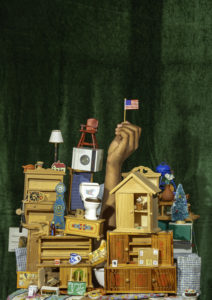
Francesca Hummler, Victory, from the series Unsere Puppenstube [Our dollhouse], 2021, digital inkjet print © Francesca Hummler
MV: What place do young artists occupy in your collection?
FSP: I know I have a little more time to buy their work because it’s in progress, but that doesn’t prevent me from falling in love with certain works at first sight. At Paris Photo I acquired Unsere Puppenstube by Francesca Hummler, an American student at the Royal College of Art in London. It’s a photographic series inspired by her personal history, which is a twofold story of exile: both her own separation from her family and that of her adopted sister. It’s a doll’s house in which their hands, which are of different colours, meet. I found these images, which reflect the subject of identity, very moving.
MV: Is it important to you to know today’s artists personally?
FSP: Of course! It’s always hugely enriching to meet artists from all over the world, both those who are well-established and younger ones. Artists are always one step ahead of society. I admire their courage, their freedom and the way they help to push the world forward. And I admire the people that support them!
Marion Vignal is a curator, consultant and author. An expert in design and contemporary art, she supports young international artists through exhibitions, commissions and special projects. A literature and art history graduate, she has written several books on the history of design, interior design and olfactory art. She is president of ida M., an editorial and artistic consultancy she set up in Paris in 2015. In 2021 she initiated the experiential exhibition programme Genius Loci, which aims to spark dialogue between architectural heritage and contemporary art.
Marion Vignal; Floriane de Saint Pierre, "Women artists through the eyes of Floriane de Saint Pierre." In , . URL : https://awarewomenartists.com/en/magazine/les-artistes-femmes-dans-loeil-de-floriane-de-saint-pierre/. Accessed 27 December 2025








